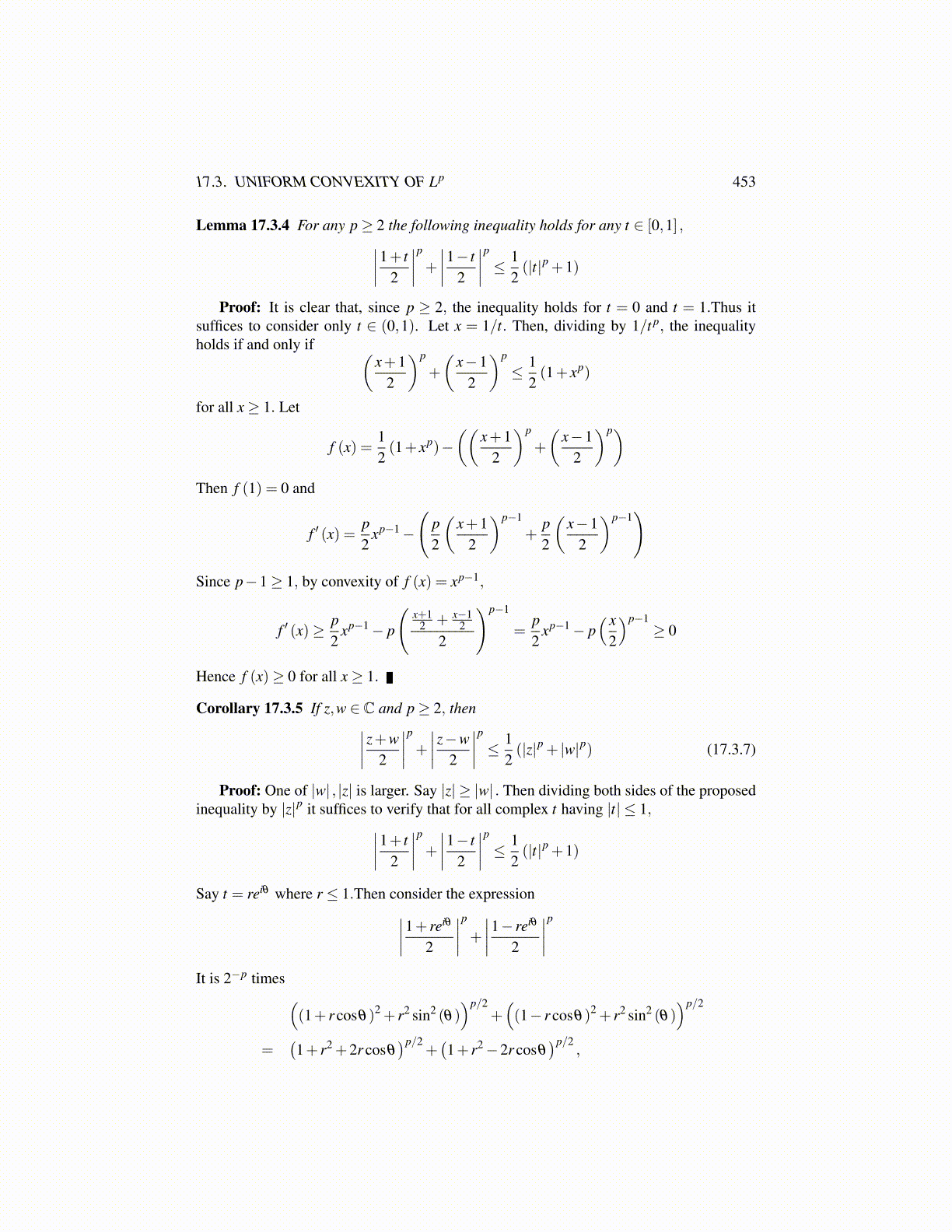
17.3. UNIFORM CONVEXITY OF Lp 453
Lemma 17.3.4 For any p≥ 2 the following inequality holds for any t ∈ [0,1] ,∣∣∣∣1+ t2
∣∣∣∣p + ∣∣∣∣1− t2
∣∣∣∣p ≤ 12(|t|p +1)
Proof: It is clear that, since p ≥ 2, the inequality holds for t = 0 and t = 1.Thus itsuffices to consider only t ∈ (0,1). Let x = 1/t. Then, dividing by 1/t p, the inequalityholds if and only if (
x+12
)p
+
(x−1
2
)p
≤ 12(1+ xp)
for all x≥ 1. Let
f (x) =12(1+ xp)−
((x+1
2
)p
+
(x−1
2
)p)Then f (1) = 0 and
f ′ (x) =p2
xp−1−
(p2
(x+1
2
)p−1
+p2
(x−1
2
)p−1)
Since p−1≥ 1, by convexity of f (x) = xp−1,
f ′ (x)≥ p2
xp−1− p
(x+1
2 + x−12
2
)p−1
=p2
xp−1− p( x
2
)p−1≥ 0
Hence f (x)≥ 0 for all x≥ 1.
Corollary 17.3.5 If z,w ∈ C and p≥ 2, then∣∣∣∣ z+w2
∣∣∣∣p + ∣∣∣∣ z−w2
∣∣∣∣p ≤ 12(|z|p + |w|p) (17.3.7)
Proof: One of |w| , |z| is larger. Say |z| ≥ |w| . Then dividing both sides of the proposedinequality by |z|p it suffices to verify that for all complex t having |t| ≤ 1,∣∣∣∣1+ t
2
∣∣∣∣p + ∣∣∣∣1− t2
∣∣∣∣p ≤ 12(|t|p +1)
Say t = reiθ where r ≤ 1.Then consider the expression∣∣∣∣1+ reiθ
2
∣∣∣∣p + ∣∣∣∣1− reiθ
2
∣∣∣∣pIt is 2−p times (
(1+ r cosθ)2 + r2 sin2 (θ))p/2
+((1− r cosθ)2 + r2 sin2 (θ)
)p/2
=(1+ r2 +2r cosθ
)p/2+(1+ r2−2r cosθ
)p/2,